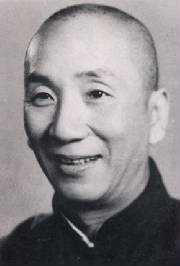Ving Tsun (“Wing Chun”) Kung Fu is a martial art developed at China’s southern Shaolin Temple. It emphasizes close quarters combat, the application of sound principles, and the development of attributes and skills as opposed to specific techniques. The legend of Ving Tsun states that it was founded roughly 400 years ago by a female Shaolin monk named Ng Mui after she observed a snake and a crane engaged in combat. She first taught this new system to a young girl named Yim Ving Tsun, and so named the system after her. Ving Tsun does not require more than average strength and can be practiced well into one’s later years. It develops relaxation, coordination, balance, timing, and sensitivity. With Ving Tsun training we realize that skilled technique based on sound principles can conquer brute strength.
Forms
1. Siu Nim Tao : introduces basic concepts, hand positions, and stance training
2. Chum Kiu: introduces foot work, body shifting, and develops coordination
3. Biu Jie: develops the ability to recover from a bad position and regain center, also develops finishing techniques & explosive power.
Ving Tsun's Five Attributes Are...
Relaxation
In Kung Fu relaxation can be defined as a state of
"no-thingness", meaning … not attached to any one thing;
whether it be a specific technique or a specific way of thinking. Mentally you are not preoccupied with any specific stimuli (internally or externally), yet you have a calm awareness of everything that is happening. Physically there is no undue muscular tension in your body, yet at the same time you are ready to take any action that is necessary. With these conditions in place you can move from a state of "no-thingness" into any of the infinite responses available to you based on what is necessary at that moment in time.
Coordination
Coordination is the ability to make your body and all it’s various parts work together in an efficient and effective manner to accomplish a specific goal. Weather it is moving, punching,kicking,throwing,locking.
Balance
Balance is the ability to keep your body (and even your mind) in an equilibrium state independent of any external factors. There are two types of balance,Static (non-moving), and Dynamic (moving). The training of static balance begins with Siu Nim Tao. The training of dynamic balance begins with Chum Kiu.
Timing
Timing is the ability to perceive windows of opportunity and take advantage of them as they move in the stream of time. Good timing is dependent upon the other 4 attributes. Perception can be clouded by an un-relaxed mind. Even if a window of opportunity is perceived, you may not be able to capitalize on it if you are un-balanced & un-coordinated, and in close quarters timing is assisted by…
Sensitivity
For our purposes sensitivity can defined as the ability to
respond efficiently to stimulus. What we strive to do is recognize the stimulus and train the response so that it becomes our nature. Thus there is no delay between our opponent’s action and our response to that action. In Ving Tsun we train tactile sensitivity primarily. We must be mindful that there are other areas of sensitivity to develop as well. The masters of old had abilities that some might call "psychic".
These 5 attributes are developed utilizing the following excercises.
1. Pak Sao :Slap Block
2. Pak Da :Block and Strike
3. Lop Da :Grab and Strike
4. Dan Chi Sao : Single sticking hands
5. Luk Sao : rolling sticking hands
6. Jip Sao Jow Sao: Catching Hand / Running Hand
7. Tui Ma : Push Horse
8. Seung Chi Sao : double sticking hands
9. Chi Gerk: sticking Legs
Ving Tsun also utilizes the following apparatus.
1. Muk Yan Jong : the wooden Dummy
2. Gerk Jong: the kicking post
3. Sao Bao : fist-conditioning bag
The advanced stages of training include the following weapons.
1. Luk Dim Boon Kwan : 6 ½ point pole
2. Bot Jahm Do : 8 slash knives
Although this is the core of our Ving Tsun curriculum it is not limited to what is listed above.
